Initial Ideas:
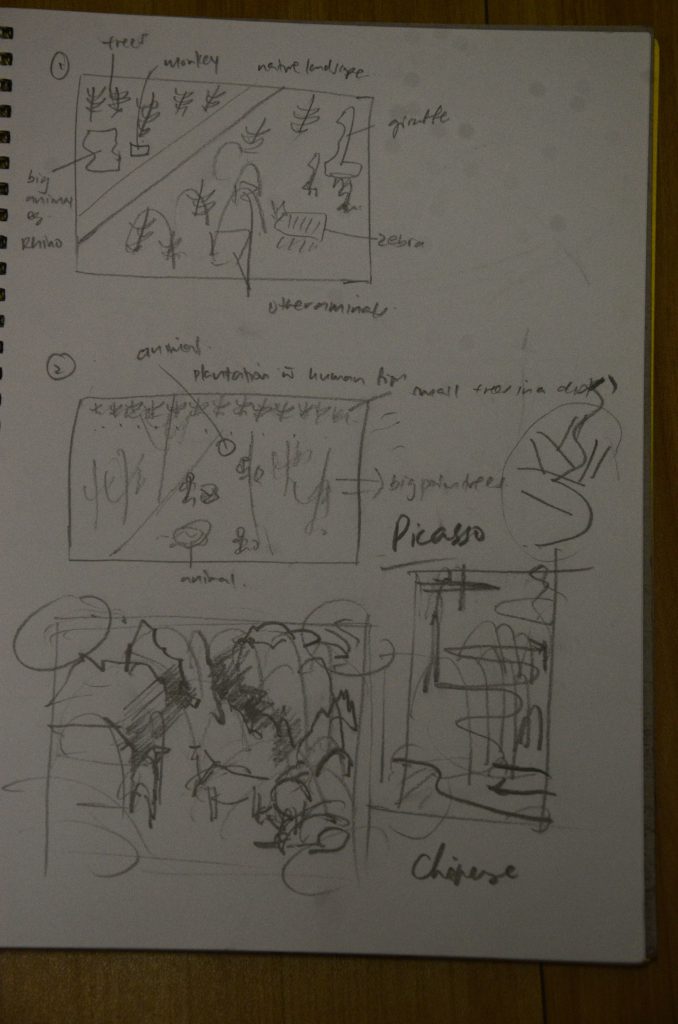
- The first idea being a nature landscape with a sandy road with animals on both sides.
- The second idea being an aerial view of a plantation with figures working.
Prof Woon Lam recommended the first idea since it sounded much more interesting.
However, after looking through the books passed around in class (my first post for final project), I found interest in chinese painting instead and decided to amend my ideas and changed the sandy paths to a mountainous background with animals scattered around.
Since I have never done any chinese painting before, I did my # 1st attempt and it was pretty horrendous. (Looks like a kid’s painting)
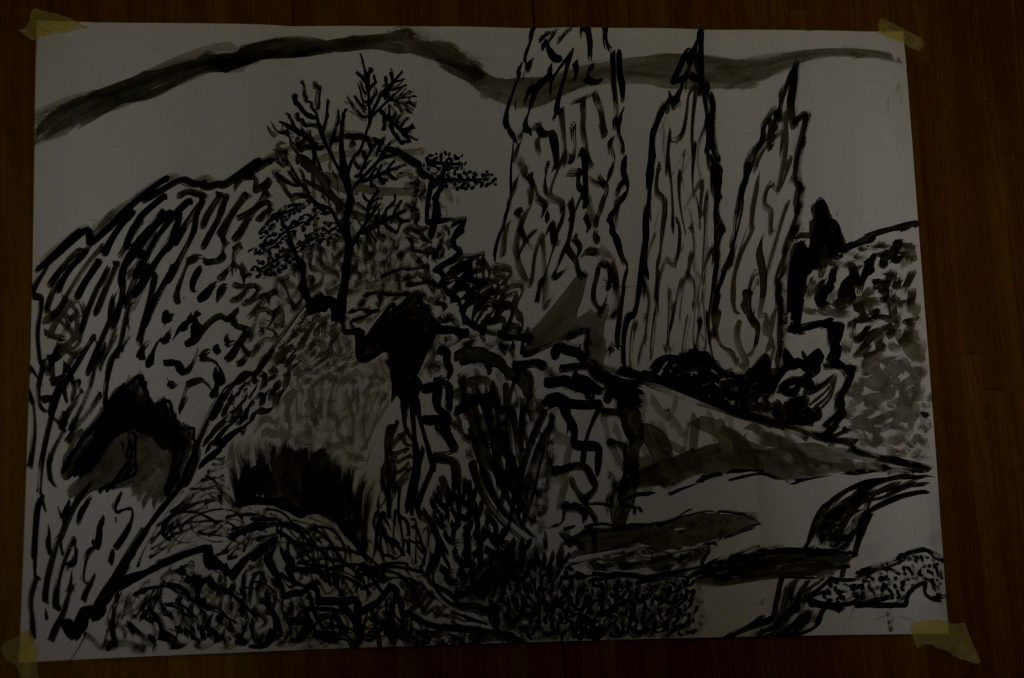
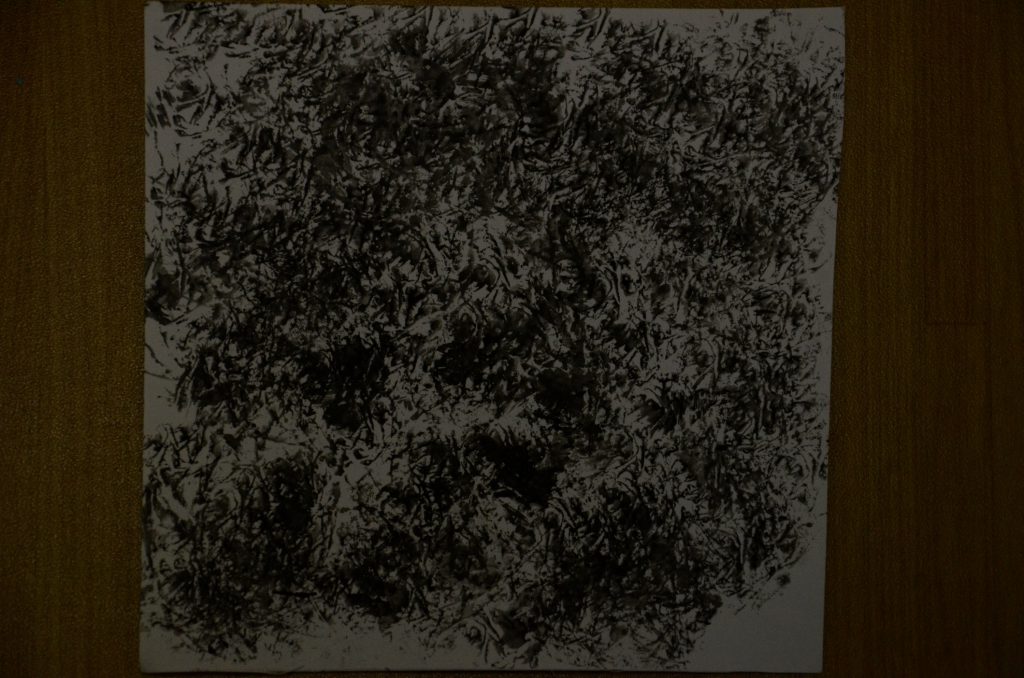
(also attempted to use different materials to create texture- in this case: tissue paper)
I made a few more horrendous attempts and made a point to consult Prof Woon Lam ASAP the next day. It turns out that the brushes I used were too small and that the papers (drawing) were too smooth to begin with hence making it very difficult to achieve any kind of texture.
Prof Woon Lam then demonstrated how to create texture with chinese ink in class.
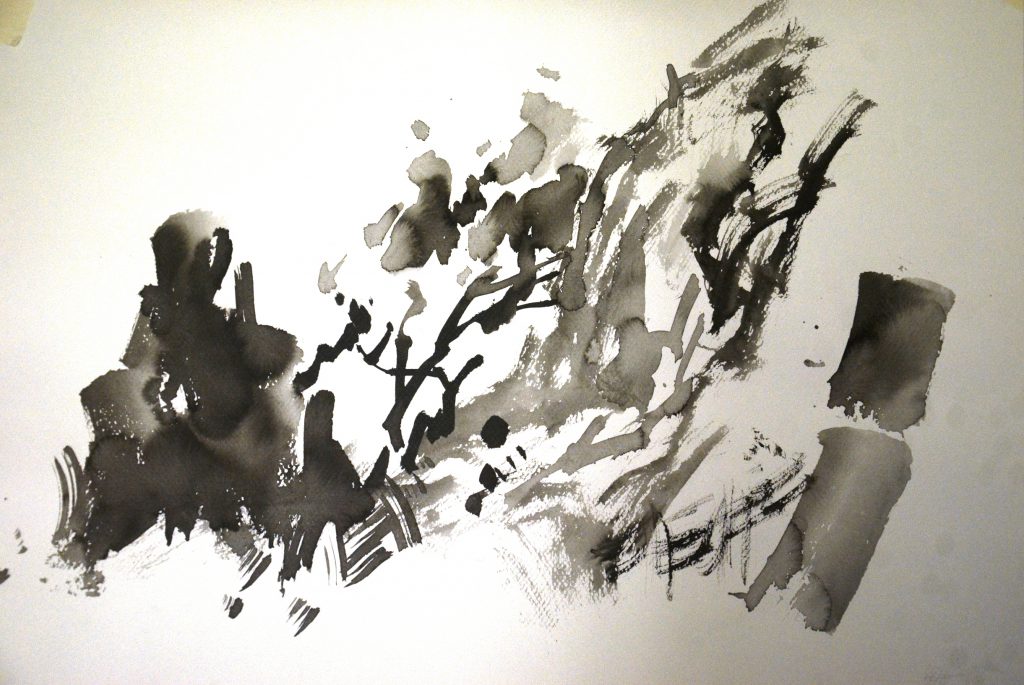
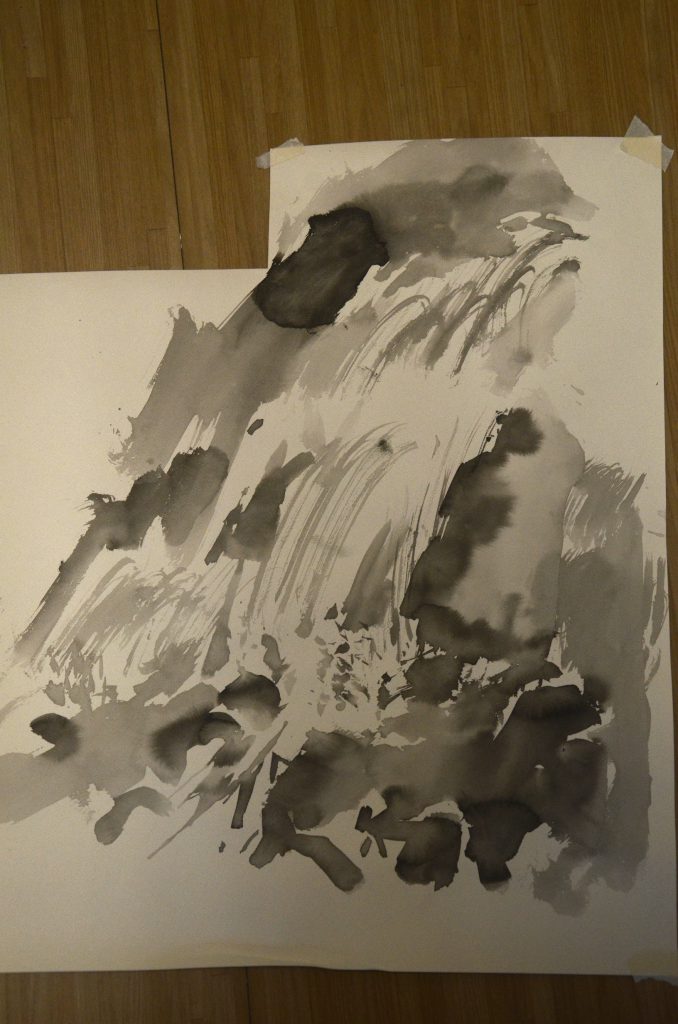
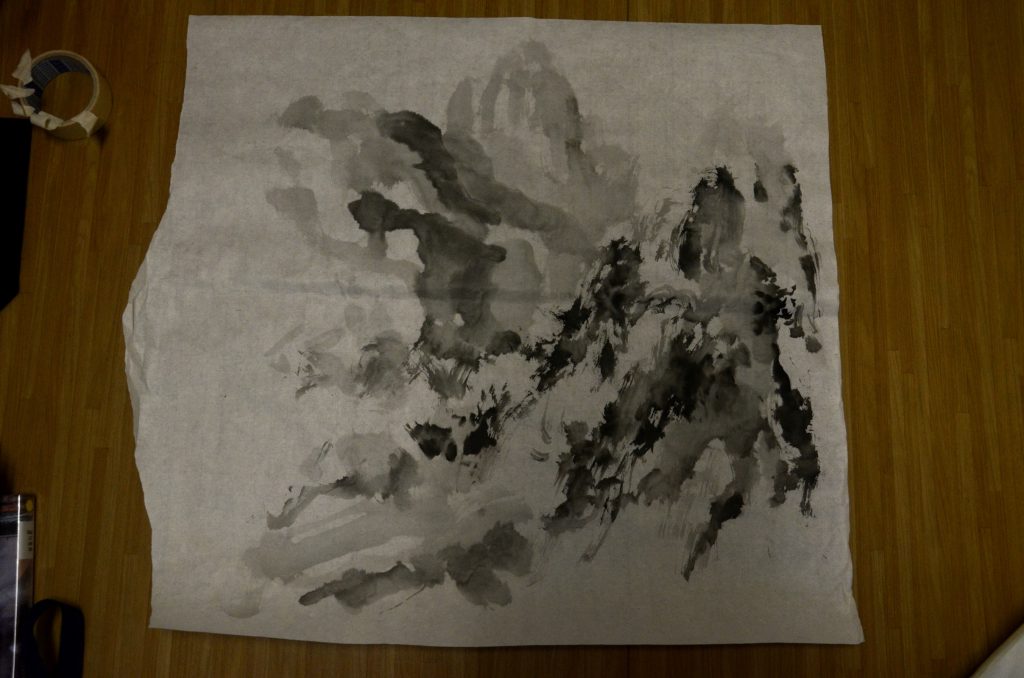
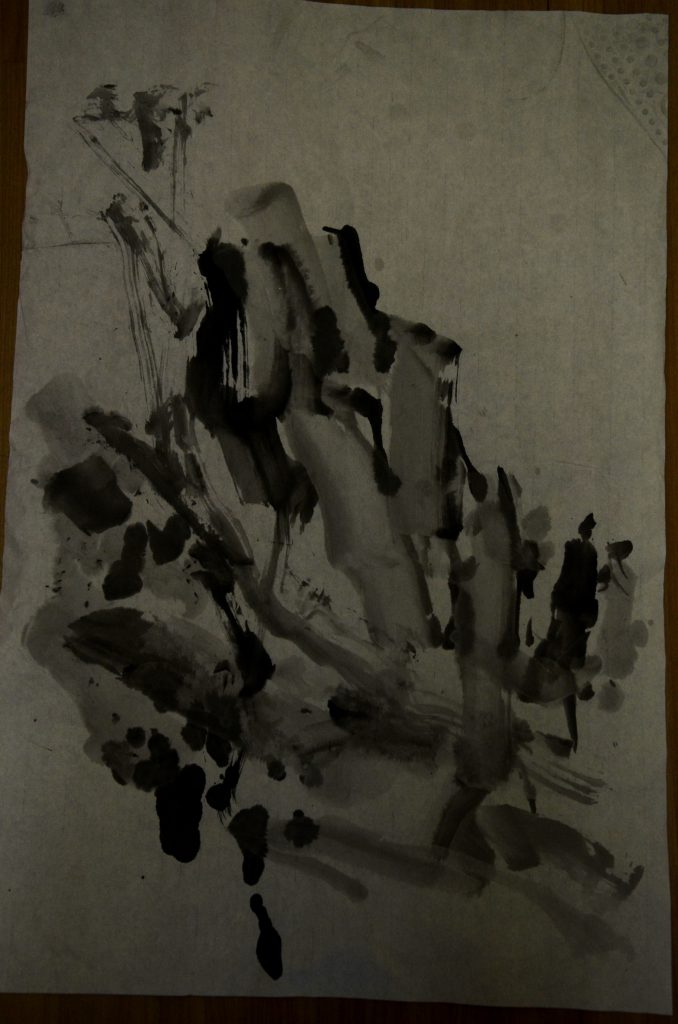
These also lead me to make a few more new attempts in class with rice paper.

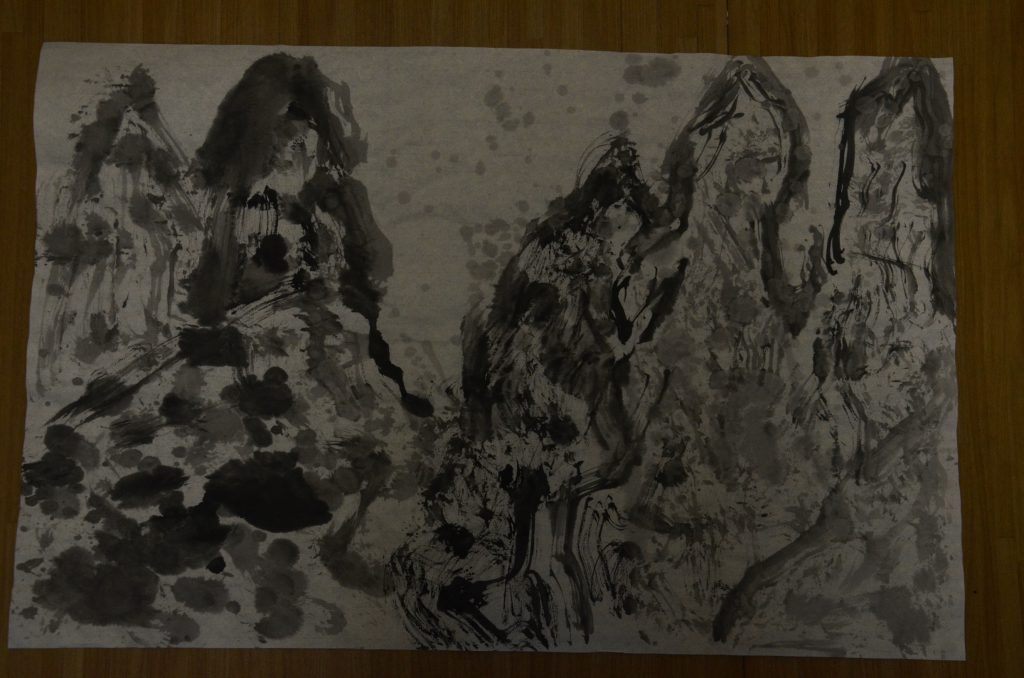
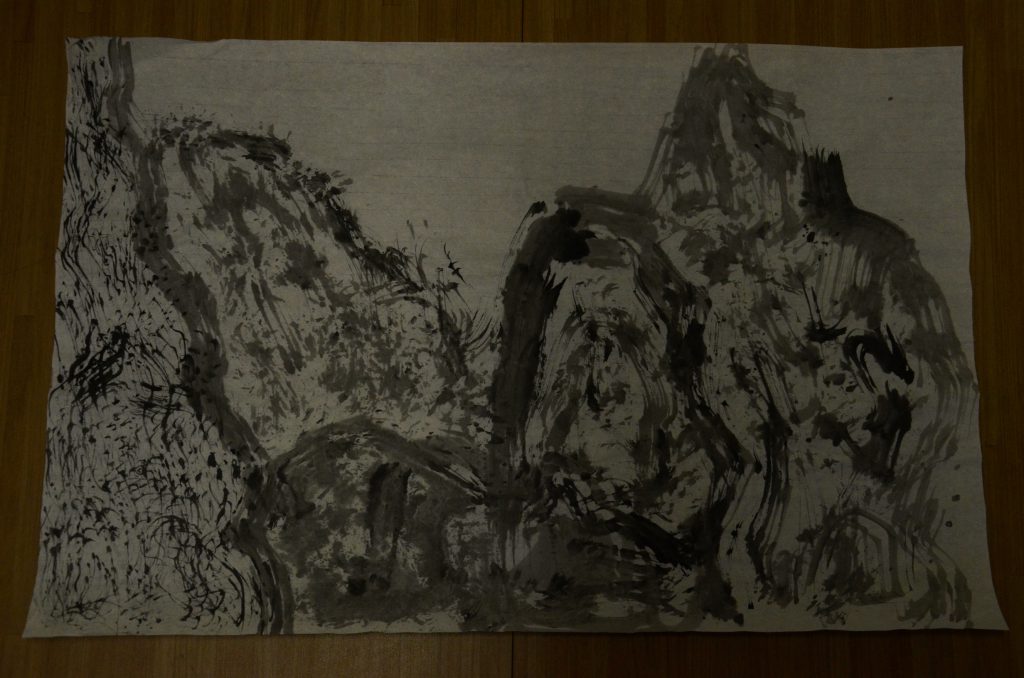
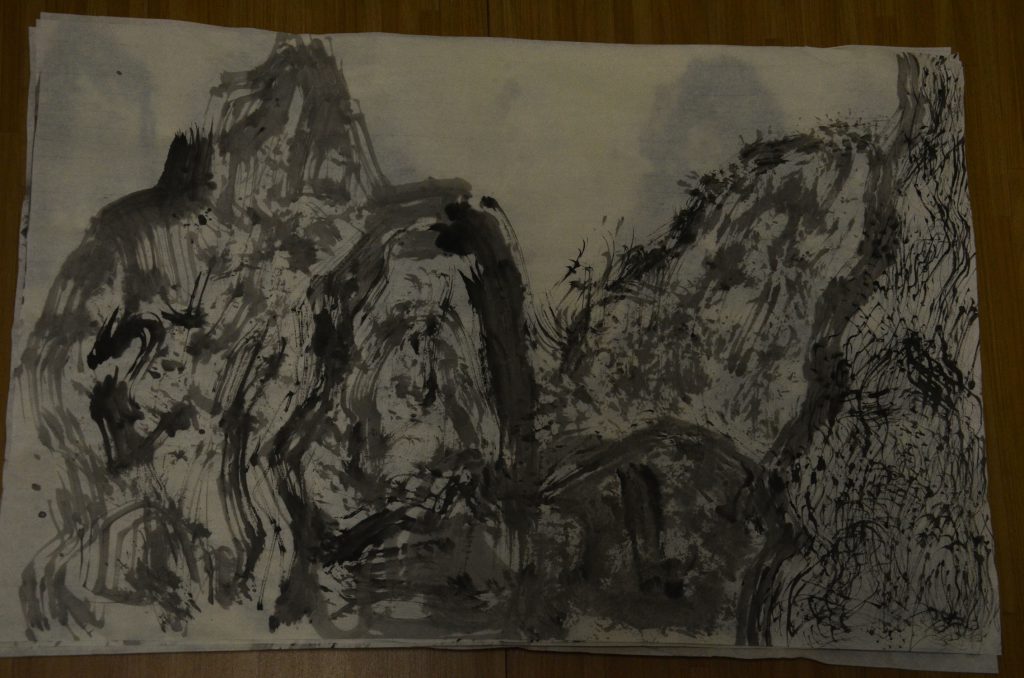
Prof Woon Lam commented that these few attempts were definitely better than the first but try not to contour the mountains and give them definite shapes. I have also learnt new splash brush and dry brush techniques.
When working with drybrush technique, don’t rush. Start with lighter tone and progressively get darker using darker ink till pure Chinese ink. Let the tonal range build up slowly so that the variation is rich.